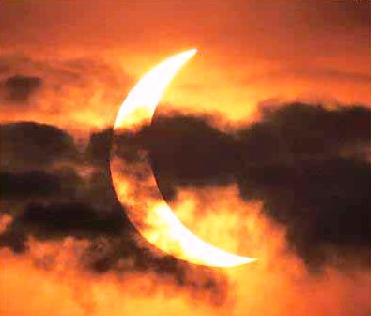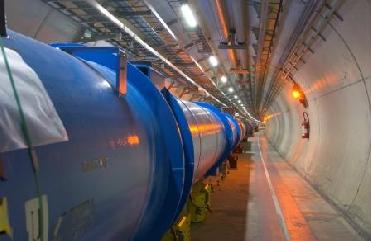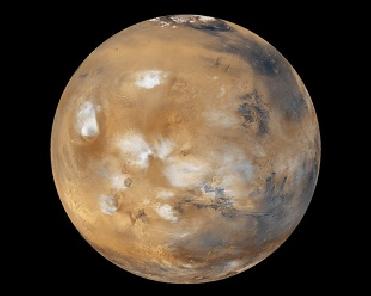
Image of the solar eclipse taken by the IIA scientists. They are now focusing on the Sun's Corona.
BANGALORE (BNS): THE Indian Institute of Astrophysics ( IIA) scientists, who had gone to China to get a clear view of the solar eclipse, are focusing on the solar corona.
A team of scientists from the IIA, Bangalore set up camp at Anji, a small hilly area in the Shanghai province of China. The site was carefully selected to achieve the best chances for observations in the prevailing weather conditions along the path of totality as well as to have a long duration of totality (5 minute 38 seconds).
Team leader S. S. Hasan called the event �truly spectacular� and said his team was able to finish a set of experiments close to Hangzhou city in the Yangtze River Delta region, as quoted by a media report.
The experiments involved studies of solar waves, monitoring of their velocity and checking the intensity of light.
The team successfully carry out the planned experiments, which consisted of fast imaging and spectroscopy of the corona in the iron green and red lines. The accompanying image of the corona was taken with a telescope of aperture 40 cm telescope using the narrow band green line filter. The Sun is now going through a minimum phase of activity, so that the corona is more diffuse and less structured. The image reveals the presence of fine plume-like structures at the poles. A combination of imaging and spectroscopy can reveal a wealth of new information about the solar corona such as the presence of waves, that could be important for heating it to two million degrees.
The focus of most scientific studies is the solar corona. The corona is the plasma � atmosphere� of the sun, extending millions of km into the space. It is most visible during a total solar eclipse so the data during the eclipse is important.
The corona is a highly active zone some million degrees hot with solar winds and flares or bursts of activity. Such activities have a huge impact on the earth�s atmosphere as well as on satellites.
The IIA also sent two cameras on board an IAF fighter aircraft, Mirage 2000 which tracked the eclipse path across India. �Our scientists did not fly, but mounted the camera and gave advice to the Air Force personnel,� said IIA dean Harish Bhatt.
�The aircraft flew over the cloud and took many images.� The Indian Space Research Organisation (ISRO) sent a set of balloons up to study atmospheric parameters at the time of the eclipse from different spots � Dehradun, Dibrugarh, Shillong, and Varanasi.
The idea is to study the effect of solar radiation on the lower and upper atmosphere. The balloons carried a radiosonde and other equipment that measures humidity, temperature, pressure, wind speed and direction.
Data gathered during the eclipse will go into the planning of a new satellite, Aditya, slated for launch next year. The satellite will carry on board an advanced solar coronagraph and a telescopic gadget designed to block out direct light from the sun so that it can shoot without burning its lenses.
The Terrain Mapping Camera of the Chandrayaan � crippled after the failure of a key sensor � was directed towards the earth to track the shadow of the moon around the world as the eclipse progressed.
 Next Article
Next Article











The Indian Air Force, in its flight trials evaluation report submitted before the Defence Ministry l..
view articleAn insight into the Medium Multi-Role Combat Aircraft competition...
view articleSky enthusiasts can now spot the International Space Station (ISS) commanded by Indian-American astr..
view article